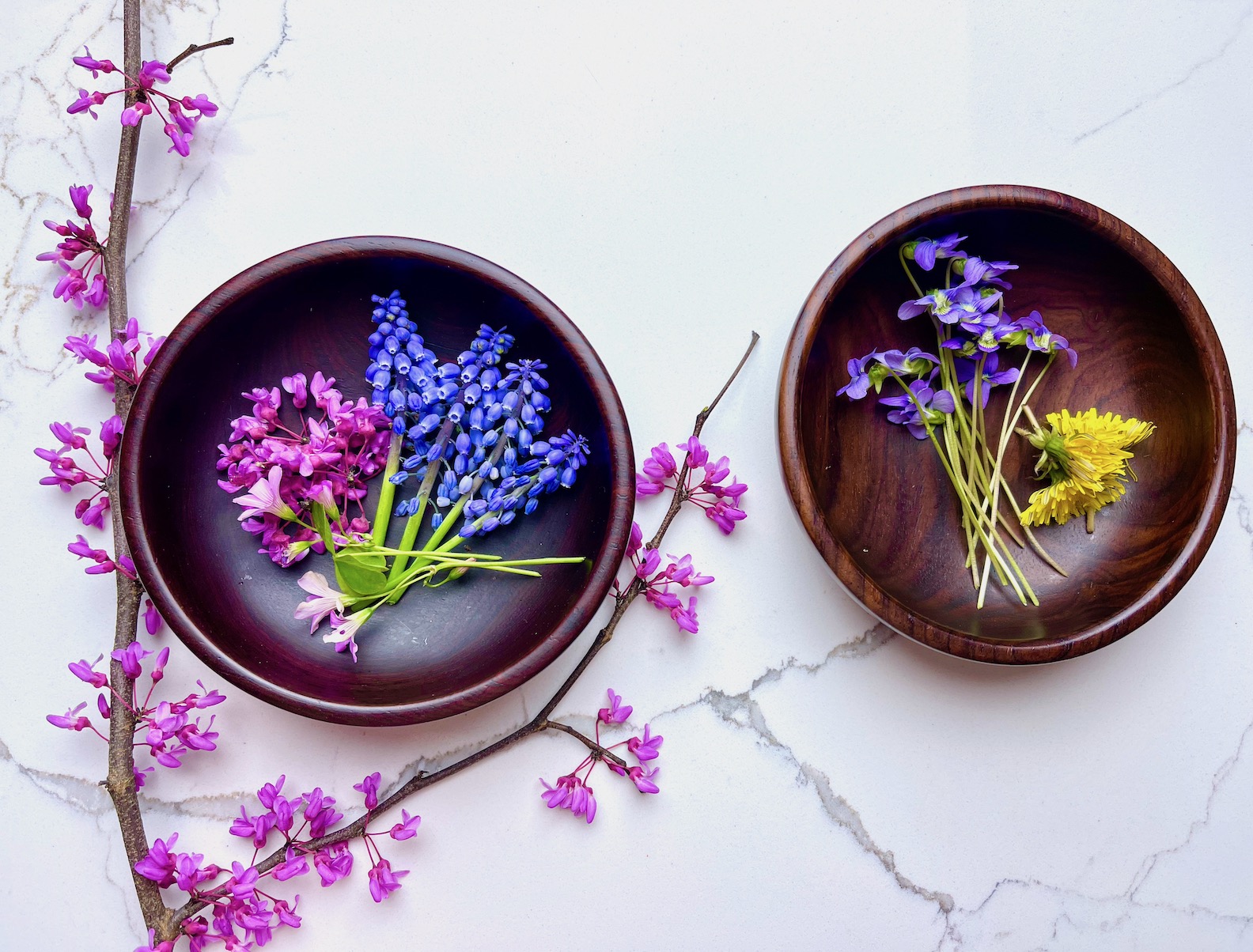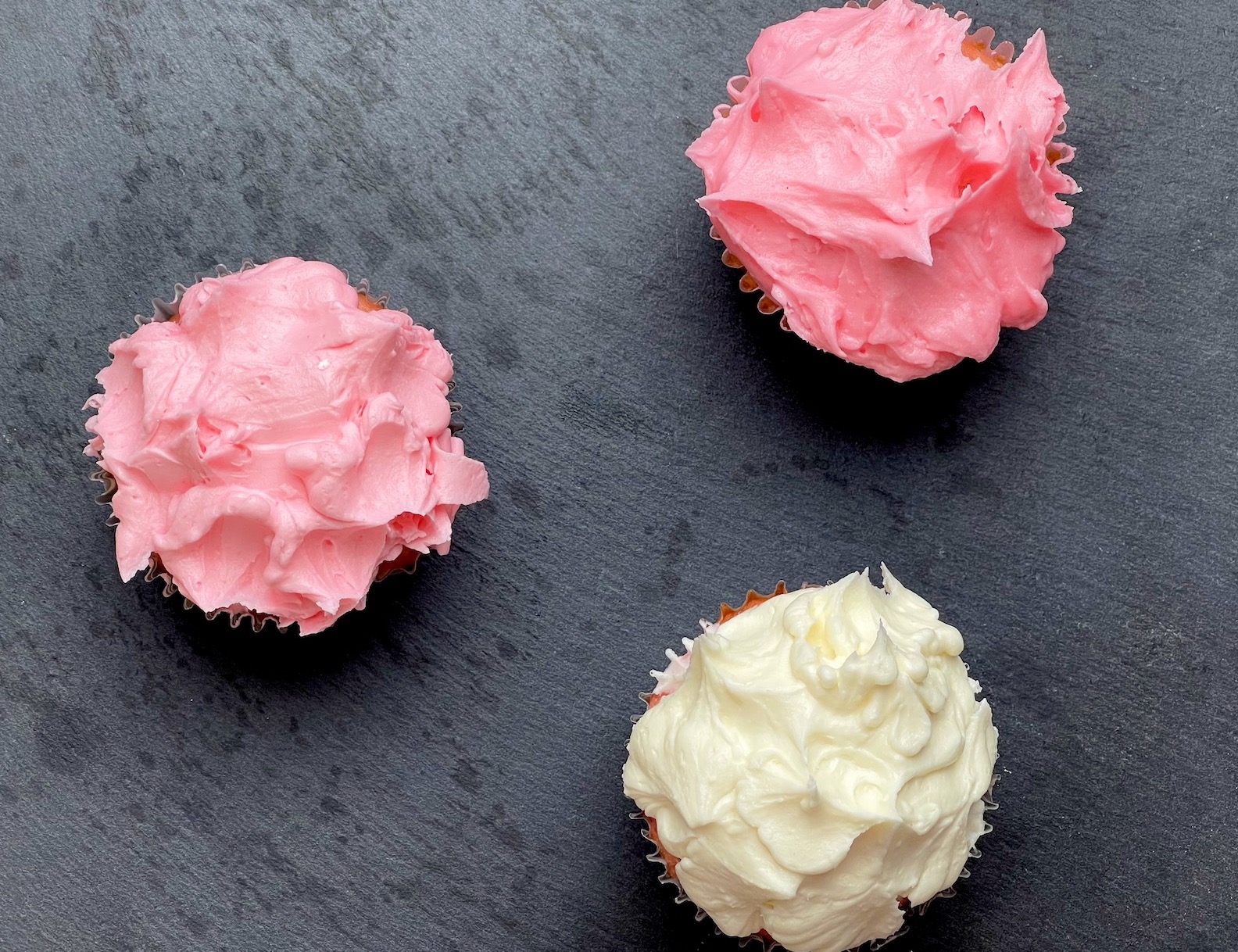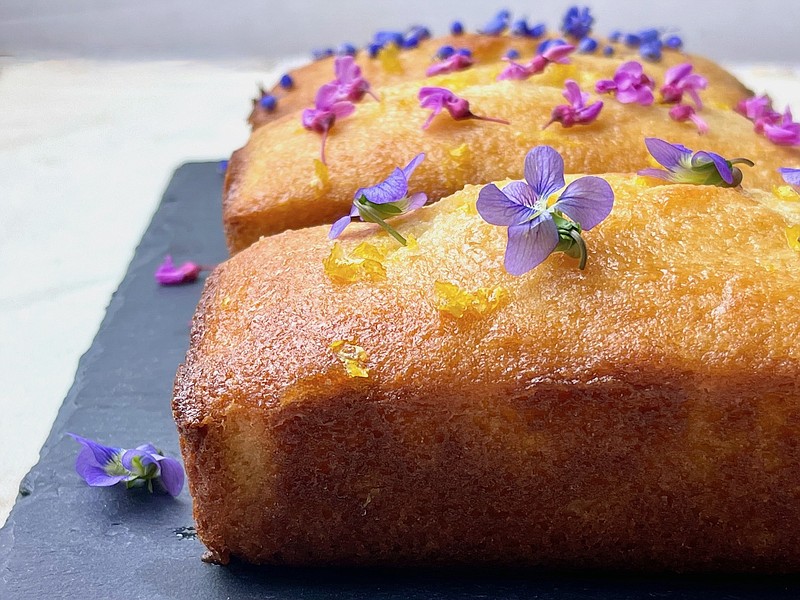April showers bring May flowers, or so the old saying goes. But here in Arkansas, spring's flowers are already abloom. You probably have some edible ones in your yard right now — roses, lilac, redbud, violets, grape hyacinths, dandelions, pansies, woodsorrel and honeysuckle, to name a few.
Note that not all flowers are edible. Do not eat any flowers you cannot positively identify or any that may have been sprayed with pesticide.
Topped with delicate edible flowers and delicate pink frosting, either or both of these desserts would be great additions to any spring occasion that calls for cake. The recipes are from a delightful, soon-to-be-released cookbook, "Tea at the Palace: A Cookbook — 50 Afternoon Tea Recipes From a Royal Chef" by Carolyn Robb (Weldon Owen, April 19).
Robb was personal chef to Britain's royal family for 13 years, first for the Duke and Duchess of Gloucester and later for Prince Charles, Princess Diana, Princes William and Harry; and while many of the recipes are those she prepared for the family, the book isn't really about them. In it, you'll find a plethora of recipes for sweets and a handful of savory treats, all appropriate for tea, as well as tidbits of British baking history and information about each of the royal residences featured in the book.
 Redbud, pink woodsorrel, grape hyacinth, violets and dandelions are just some of the edible flowers blooming in Arkansas right now. (Arkansas Democrat-Gazette/Kelly Brant) Gluten-free bakers will be pleased to see several suitable recipes, including one of the cakes here.
Redbud, pink woodsorrel, grape hyacinth, violets and dandelions are just some of the edible flowers blooming in Arkansas right now. (Arkansas Democrat-Gazette/Kelly Brant) Gluten-free bakers will be pleased to see several suitable recipes, including one of the cakes here.
The book is divided into chapters representing a dozen famous residences — Buckingham Palace, Sandringham House, Kensington Palace, Hampton Court Palace, Brighton Pavilion, Highgrove House, Blenheim Palace, Balmoral Castle, The Castle of Mey, Kew Palace, Windsor Castle and Caernarfon Castle — with recipes tied to each residence, whether symbolically, figuratively or historically.
For example, the following recipes are from the Kew Palace chapter. Kew Palace, the weekend retreat of several generations of Georgian royalty, sits within the Kew Royal Botanic Gardens. The tie-in to the gardens is their floral and botanical flavors.
Robb calls for baking these cakes in teeny tiny 3-by-1 ¾-inch pans, which I don't have, so I used "regular" mini loaf pans instead. I imagine you could also bake this in a 9-by-5-inch loaf pan, but you would need to significantly increase the baking time. The batter is mixed entirely by hand, which some bakers may find a bit arduous — particularly creaming the butter and sugar — but if your butter has softened enough, it is doable.
Mini Vanilla, Ginger and Buttermilk Loaves
- For the cake:
- 1 cup (225 grams) butter, at room temperature
- 1 cup PLUS 1 tablespoon (225 grams) granulated sugar
- 4 eggs
- 1 ½ cups (140 grams) almond flour/meal
- 1 cup (125 grams) gluten-free all-purpose flour
- 1 teaspoon baking powder
- Pinch salt
- ½ teaspoon xanthan gum
- 3 tablespoons buttermilk
- 1 teaspoon vanilla extract
- 4 pieces stem ginger in syrup, finely grated (see note)
- 1 tablespoon stem ginger syrup
- For the glaze:
- 1 cup (125 g) confectioners' sugar
- ¼ cup (60 mL) fresh lemon juice
- 1 tablespoon water
- Finely grated zest of 1 lemon
- For the decoration:
- Small edible, fresh flowers (I used violets, grape hyacinths and redbud blossoms)
- Confectioners' sugar, for dusting
Heat oven to 350 degrees. Line the bottom of 12 (3-by-1 ¾-inch) loaf pans or 4 (5 ¾-by-3 ¼-inch) loaf pans with parchment paper.
In a large bowl, using a wooden spoon, mix the butter and sugar until light and creamy. Add the eggs, one at a time, mixing well after each addition. Fold in the almond flour, all-purpose flour, baking powder, salt and xanthan gum just until fully incorporated. Stir in the buttermilk, vanilla, grated ginger and ginger syrup.
Divide the batter evenly among the prepared pans. Bake until cakes are golden and the top springs back to the touch, 15 to 18 minutes for tiny loaves, 28 to 30 minutes for mini loaves. Let the cakes cool in the pans on a wire rack for several minutes. Remove the cakes from the pans, peel away the parchment paper, if necessary, and set them on the wire rack. Set the rack over a rimmed sheet pan.
Meanwhile, in a small pan over medium heat, combine the confectioners' sugar, lemon juice and water. Cook, stirring until the sugar is completely dissolved. The glaze should be runny and translucent, but not necessarily clear. Remove from heat and stir in the lemon zest.
While the cakes are still warm, brush the glaze over the tops and sides of each cake and then let cool completely. Just before serving, top each one with flowers and a light dusting of confectioners' sugar.
Makes 12 mini loaves.
Note: Front Burner published a recipe for stem ginger April 6.
 Rose and White Chocolate Cupcakes (Arkansas Democrat-Gazette/Kelly Brant) Rose and White Chocolate Cupcakes
Rose and White Chocolate Cupcakes (Arkansas Democrat-Gazette/Kelly Brant) Rose and White Chocolate Cupcakes
- For the cake:
- ¾ cup (170 grams) butter, at room temperature
- ¾ cup PLUS 2 tablespoons (175 grams) granulated sugar
- ½ teaspoon vanilla extract
- 3 eggs
- 1 1/3 cups (175 grams) cake flour
- ½ teaspoon baking powder
- Red or pink food coloring, as desired
- For the buttercream:
- 3 ½ ounces (100 grams) white chocolate, chopped
- 7 tablespoons (100 grams) butter, at room temperature
- ¾ cup (100 grams) confectioners' sugar, sifted
- ½ teaspoon vanilla extract
- Few drops rose water
- Red or pink food coloring, as desired
- Rose petals, optional
Heat oven to 350 degrees. Line 24 mini muffin cups or 12 standard muffin cups with paper liners. Coat each liner lightly with baking spray.
In a large bowl, using an electric mixer, beat the butter and sugar on medium speed until light and fluffy. Beat in the vanilla and then add the eggs one at a time, beating well after each addition. Sift together the flour and baking powder directly into the bowl with the creamed mixture. Mix on low speed until just incorporated. Add food color by the drop, mixing after each addition, until desired color is achieved.
Spoon batter into the prepared muffin cups, dividing it evenly. Bake until cakes are springy to the touch and a wooden tester inserted near the center comes out clean; 10 to 12 minutes for mini cakes or 12 to 18 minutes for standard cakes. Let cool in pan on a wire rack for a few minutes, then remove cupcakes from pan and cool completely.
[Video not showing above? Click here to watch: arkansasonline.com/413buttercream]
While the cupcakes are baking, prepare the buttercream. In the top part of a double boiler or a medium glass or metal bowl set over a saucepan with about an inch of barely simmering water, melt the white chocolate, stirring occasionally until smooth. Remove from heat and let cool completely.
In a mixing bowl, beat the butter with an electric mixer until creamy. Add the confectioners' sugar, continue beating until mixture is very light and creamy. With the mixer running, gradually pour in the cooled melted chocolate and continue beating until all of the chocolate has been added and the mixture is well mixed. Divide the buttercream evenly between two bowls. Stir the vanilla into one bowl. Add a drop or three of rosewater and a drop or two of food color to the other bowl, stirring between additions and adding just enough color to achieve desired rose-pink color. Transfer both frostings to piping bags.
When the cupcakes are completely cooled, pipe a swirl of buttercream onto the top of each one. If desired, decorate with rose petals.
Makes 12 standard or 24 mini cupcakes.
